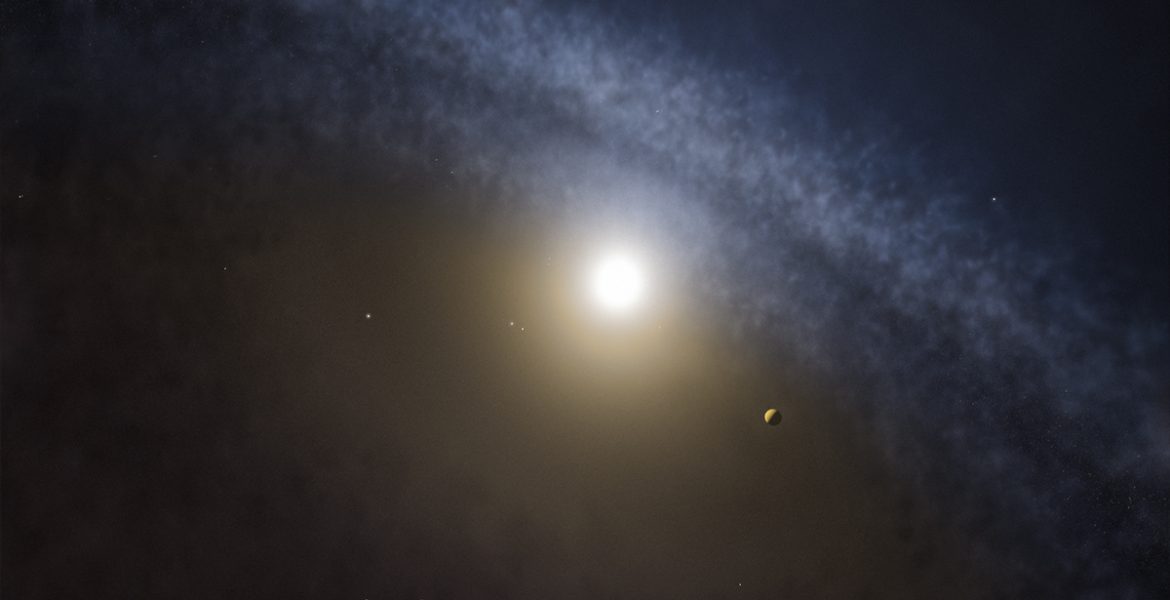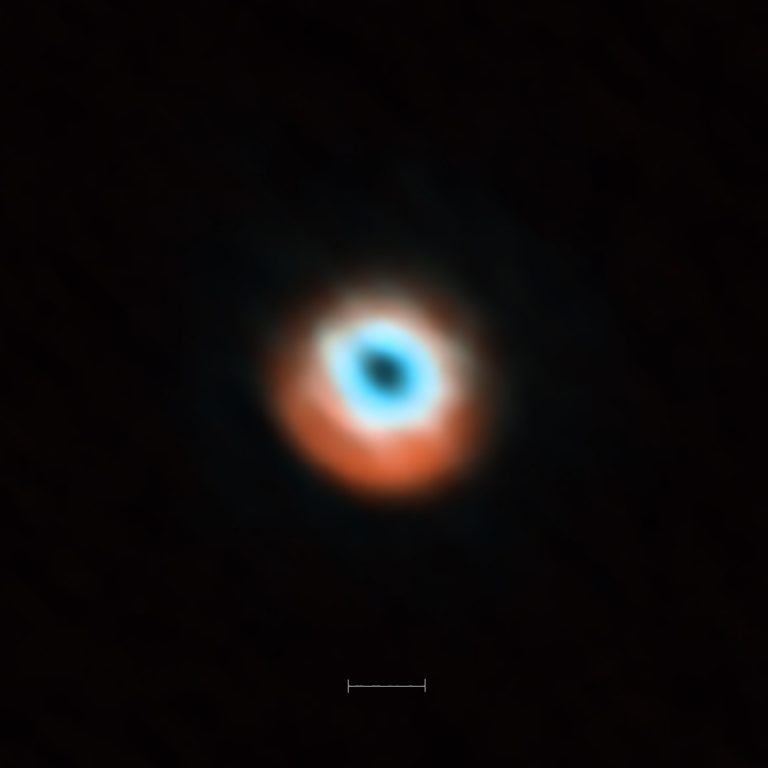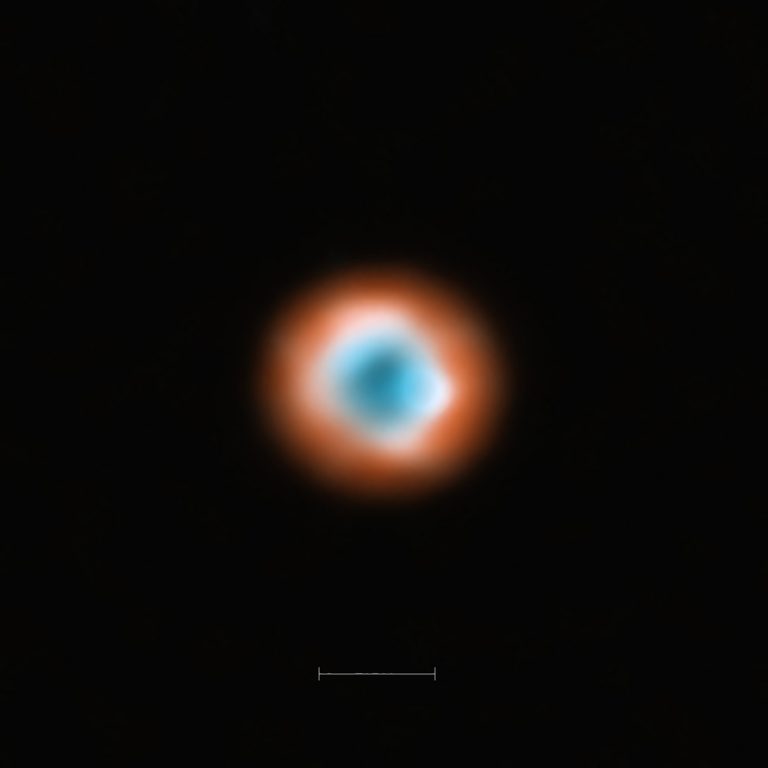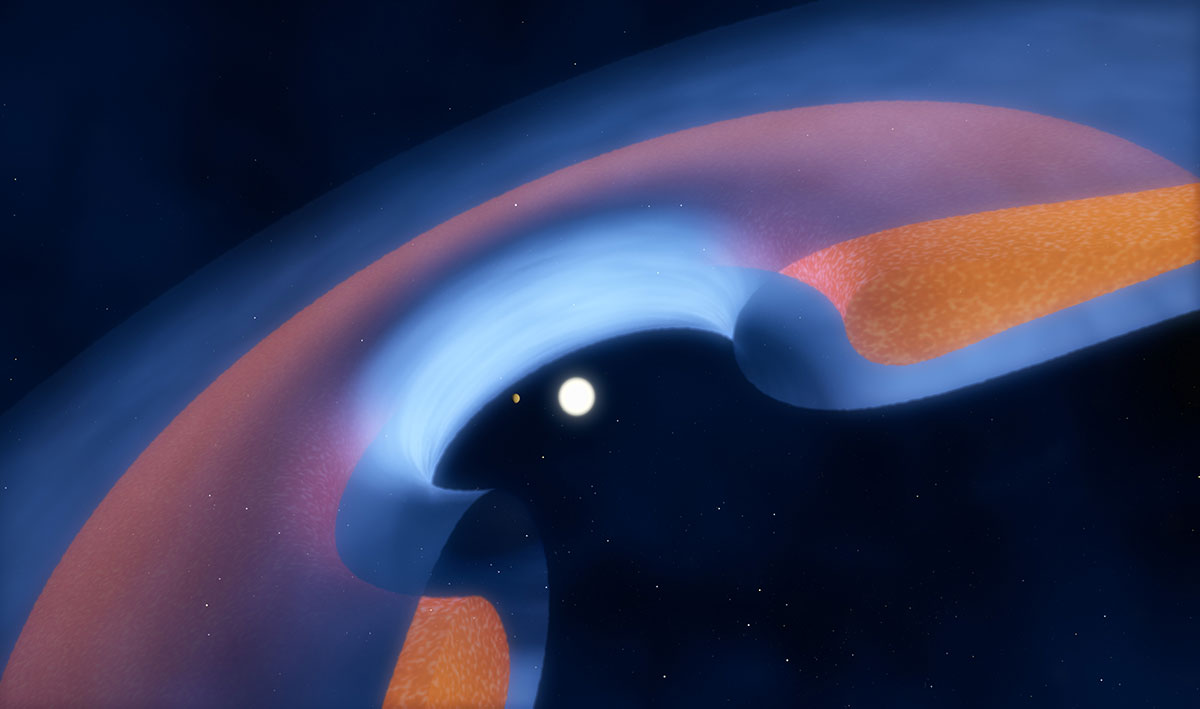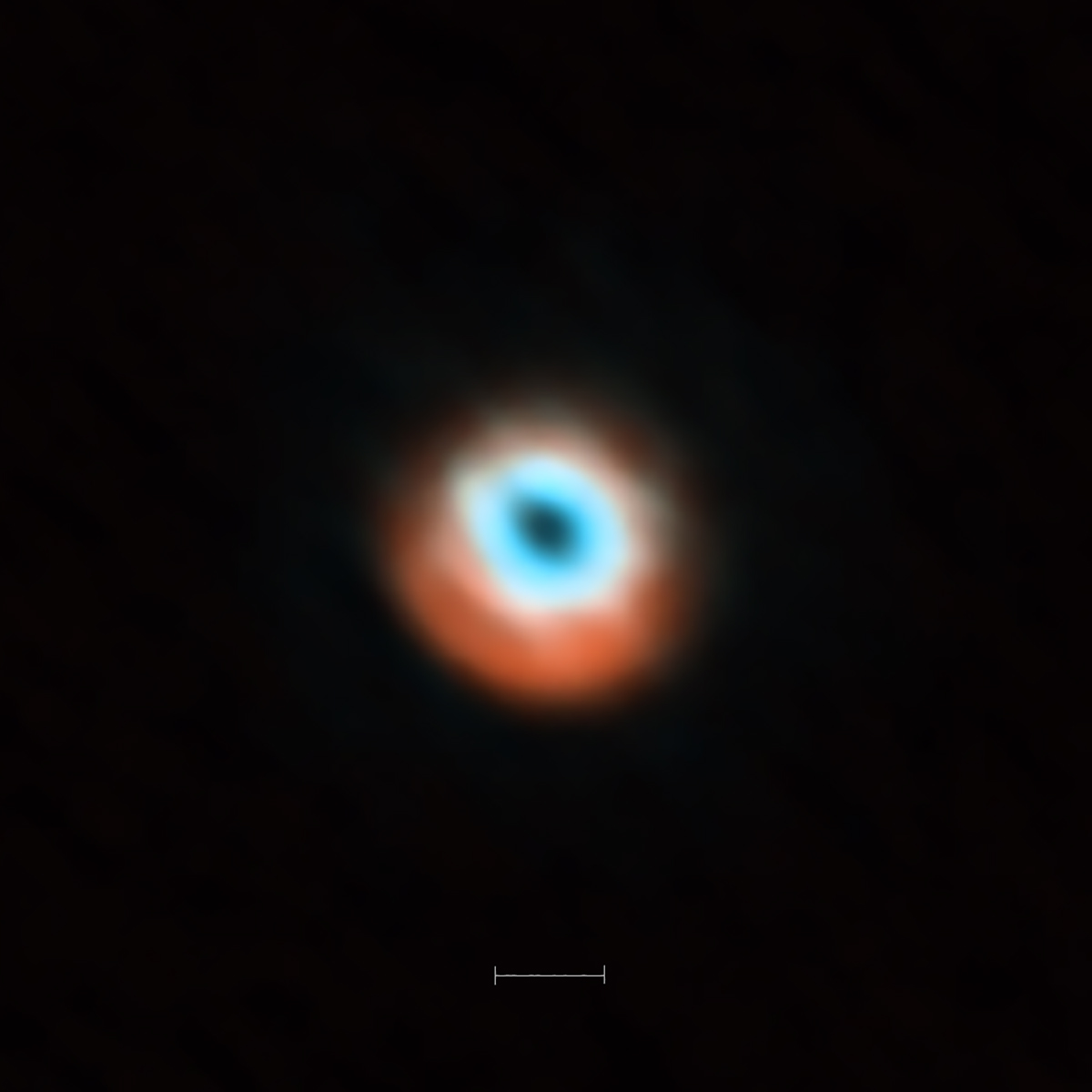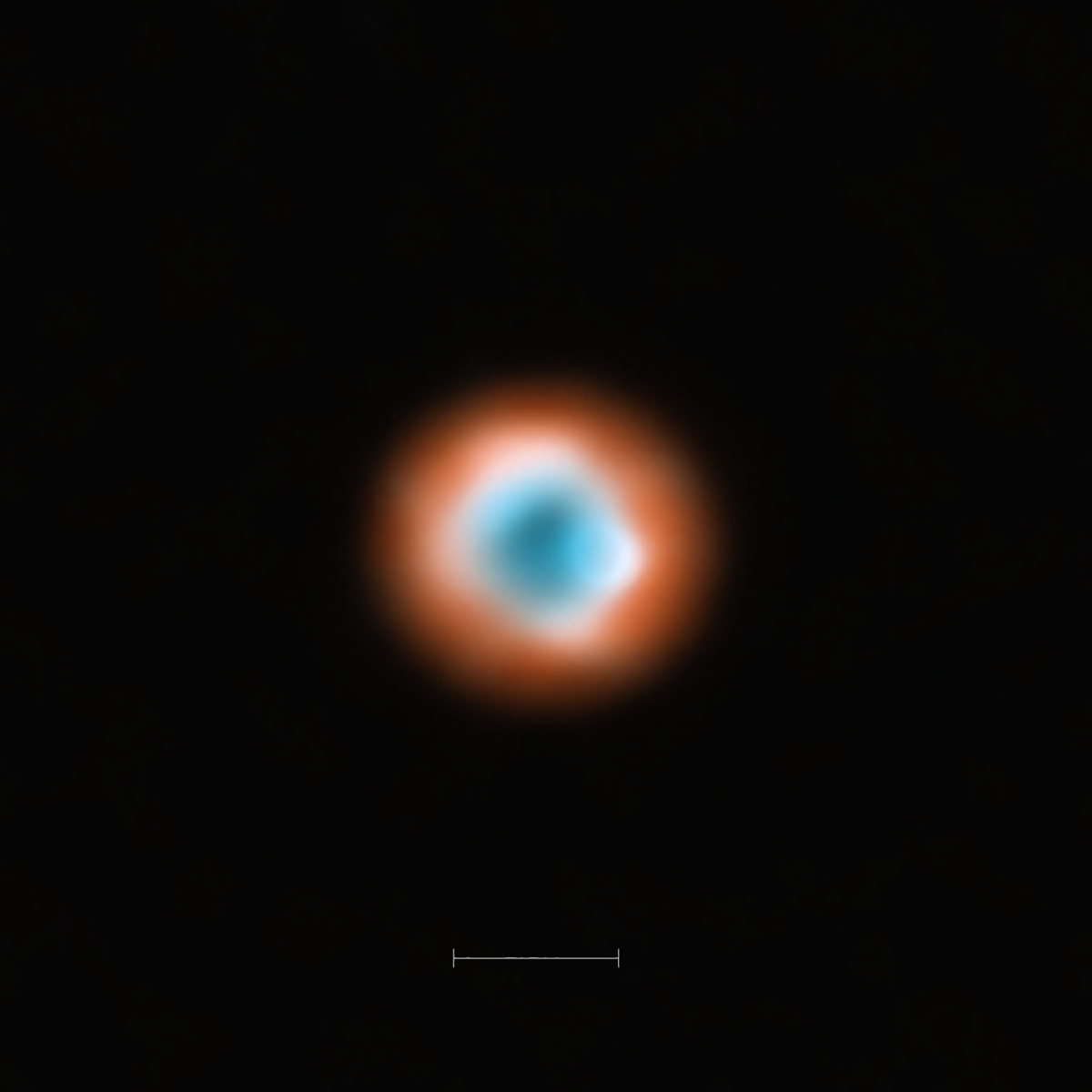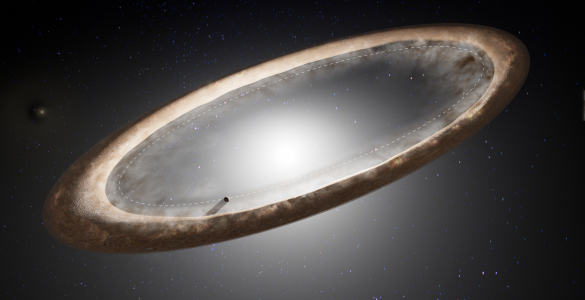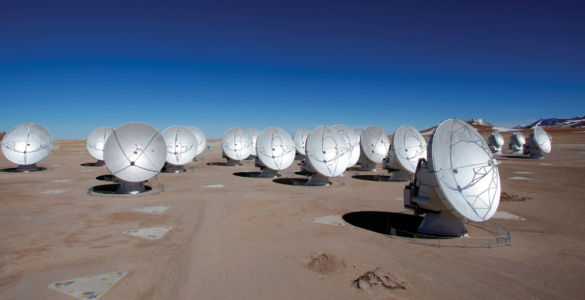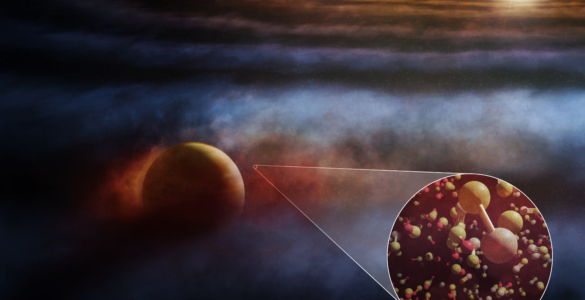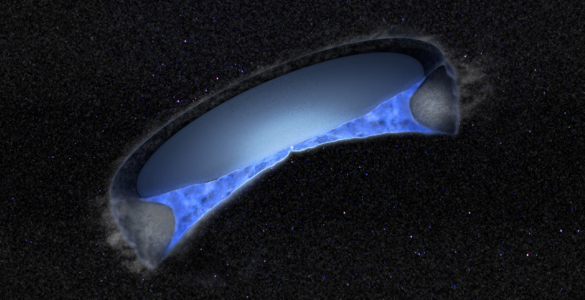Astronomers using the Atacama Large Millimeter/submillimeter Array (ALMA) have found the clearest evidence yet that giant planets have recently formed around four young stars. These new worlds, each presumably several times more massive than Jupiter, were inferred by the telltale structures they produced in the disks of gas and dust that surround the stars.
Though planets appear remarkably plentiful in our Galaxy, astronomers still don’t fully understand how and under what conditions they form. To help answer these questions, scientists study the structure and composition of the planet-forming disks of dust and gas around young stars.
Certain disks, called transitional disks, have a surprising absence of dust at their centers, in the region around the star. Two main ideas have been put forward to explain these mysterious cavities. First, the strong stellar winds and intense radiation from the star could have blown away or simply destroyed the encircling gas and dust. Alternatively, massive young planets in the process of formation could have cleared the material as they orbit the star. Previous observations lacked the sensitivity and resolution to determine the most likely explanation.
With ALMA, however, the team of astronomers, led by Nienke van der Marel of Leiden Observatory, the Netherlands, was able to map the distribution of gas and dust in four of these transitional disks better than ever before.
The new ALMA images confirm that the dust-free zones of these disks are not empty, but instead contain significant amounts of gas. These gas-filled regions, the researchers discovered, also contain cavities that are up to three times smaller than the gaps observed in the dust. Such structures are best explained by the scenario in which newly formed massive planets have cleared the gas as they traveled around their orbits.
“Previous observations already hinted at the presence of gas inside the dust cavities,” explains Nienke van der Marel. “But as ALMA can image the material in the entire disk with much greater sharpness and depth than other facilities, we could rule out the alternative scenario. The deep gap points clearly to the presence of planets with several times the mass of Jupiter, creating these caverns as they sweep through the disk.”
Remarkably, these observations were conducted utilizing just one tenth of the current resolving power of ALMA, as they were performed while half of the array was still under construction on Chajnantor Plateau in northern Chile.
Further studies are now needed to determine whether more transitional disks also point toward this planet-clearing scenario, though ALMA’s observations have, in the meantime, provided astronomers with a valuable new insight into the complex process of planetary formation.
“We can now take these exquisite ALMA data and better understand the step-by-step process of planet formation in these disks of gas and dust,” says team member Sean Andrews with the Harvard-Smithsonian Center for Astrophysics. “I and other astronomers are excited to take an even better look at these regions with the full power of ALMA.”
The formal names of the specific stars studied by ALMA are: SR 21, HD 135344B (SAO206462), DoAr 44, and Oph IRS 48.
The National Radio Astronomy Observatory is a facility of the National Science Foundation, operated under cooperative agreement by Associated Universities, Inc.
More Information:
This research was presented in the paper: “Resolved gas cavities in transitional disks inferred from CO isotopologs with ALMA”, by N. van der Marel, et al., to appear in Astronomy & Astrophysics in December 2015.
The team is composed of N. van der Marel (Leiden University, Leiden, the Netherlands; Institute for Astronomy, University of Hawaii, Honolulu, USA), E. F. van Dishoeck (Leiden University, Leiden, the Netherlands; Max Planck Institute for Extraterrestrial Physics in Garching), S. Bruderer (Max-Planck Institute for Extraterrestrial Physics, Garching, Germany), S. M. Andrews (Harvard-Smithsonian Center for Astrophysics, Massachusetts, USA), K. M. Pontoppidan (Space Telescope Science Institute, Baltimore, Maryland, USA), G. J. Herczeg (Peking University, Beijing, China), T. van Kempen (Leiden University, Leiden, the Netherlands) and A. Miotello (Leiden University, Leiden, the Netherlands).
The Atacama Large Millimeter/submillimeter Array (ALMA), an international astronomy facility, is a partnership of the European Organisation for Astronomical Research in the Southern Hemisphere (ESO), the U.S. National Science Foundation (NSF) and the National Institutes of Natural Sciences (NINS) of Japan in cooperation with the Republic of Chile. ALMA is funded by ESO on behalf of its Member States, by NSF in cooperation with the National Research Council of Canada (NRC) and the National Science Council of Taiwan (NSC) and by NINS in cooperation with the Academia Sinica (AS) in Taiwan and the Korea Astronomy and Space Science Institute (KASI).
ALMA construction and operations are led by ESO on behalf of its Member States; by the National Radio Astronomy Observatory (NRAO), managed by Associated Universities, Inc. (AUI), on behalf of North America; and by the National Astronomical Observatory of Japan (NAOJ) on behalf of East Asia. The Joint ALMA Observatory (JAO) provides the unified leadership and management of the construction, commissioning and operation of ALMA.
Contacts:
Nienke van der Marel
Institute for Astronomy
University of Hawaii, USA
Email: nmarel@ifa.hawaii.edu
Charles Blue
NRAO Public Information Officer
Charlottesville, VA
434-296-0314; cblue@nrao.edu
Richard Hook
ESO Public Information Officer
Garching bei München, Germany
Tel: +49 89 3200 6655
Cell: +49 151 1537 3591
Email: rhook@eso.org






